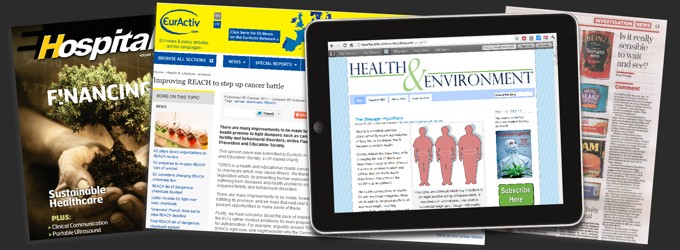
False alarms or missed hazards: should the regulatory definition of endocrine disruptor be unscientific?
November 2012, Health & Environment. It might sound absurd to say that the definition of “endocrine disruptor” should be unscientific, but in fact there are important trade-offs entailed in how we define, for regulatory purposes, a chemical as an endocrine disruptor. These trade-offs should make us very cautious about conflating the purpose of a regulatory definition of EDC with the purpose of a scientifically correct definition of EDC, and may even show us that the process of defining EDC is a democratic matter which cannot be decided by expert committees alone.
Just the ticket? Alternatives to BPA in receipt paper
August 2012, Health & Environment. Although information about the environmental performance of potential substitutes for is lacking, the Swedish Chemicals Agency (KEMI) has nonetheless proposed banning the use of BPA in thermal paper. This article outline some of the problems with securing data on chemicals used in manufactured goods, and why a ban on BPA may be justified in spite of the dearth of information on safer alternatives.
How are chemicals affecting our health?
July 2012, ChemSec. A series of 8 web briefings on how chemicals affect health, covering 7 of the more extensively researched health problems (cancer, obesity, diabetes, thyroid function, neurotoxicity, and female and male reproductive health), with one background piece summarising the general concerns around chemicals and health.
Toxicity tests for chemicals: If only we all had EFSA’s crystal ball
April 2012, Euractiv. As ever, the bottom line is that TTCs are just one strategy for dealing with the lack of toxicological data we have on the chemicals to which we are exposed. This opinion piece concentrates on how TTCs effectively legislate against the use of low-dose data – just the sort which Vandenberg et al. recently found compelling in a review in Endocrinology.
PFCs: A case study in favour of the precautionary principle
December 2011, Health & Environment. PFCs are an example of how production and marketing of a substance can outpace scientific research into its safety and placing regulatory restrictions on its use. In the case of PFCs, this has resulted in 3 generations of people being exposed to an unknown hazard while a complex consensus, based on weak data and economic interests, develops around restricting their use.
Improving REACH to step up cancer battle
October 2011, Euractiv. “There are many improvements to be made before REACH can fulfil its public health promise to fight diseases such as cancer, obesity, diabetes, impaired fertility and behavioural disorders, writes Paul Whaley from the Cancer Prevention and Education Society.”
Swamping Part 2: Affinity is only part of the picture
September 2011, Health & Environment. A look at why it is wrong to claim that potential EDCs cannot have a health effect if they have a much lower affinity for a receptor than natural hormones, and examine why this means standard toxicological testing protocols are unhelpful for assessing possible harm from EDCs.
Assessing Risk Posed by Chemicals in Mixtures
July 2011, Health & Environment. Chemical risk assessment has to change in order to understand and manage the risk that multiple, everyday exposures may pose to health. As things stand, it is not up to the job, so we examine some proposals for overhauling risk assessment so it can deal with mixtures.
The Obesogen Hypothesis
March 2011, Health & Environment. The full set of reasons as to why someone might become obese must be more complex than loss of control over energy balance is, otherwise treatment of obesity through diet and lifestyle changes alone would be successful more often than in just 2-20% of cases. We look at the hypothesis that some chemicals may have a role to play in promoting energy imbalance.
Is it really sensible to wait and see?
November 2010, The Independent. Opinion piece summarising the controversies around BPA and the case for precautionary restrictions on the use of the substance.
Chemical reaction is long overdue
November 2010, The Independent. Opinion piece advocating for swifter action to restrict the use of BPA in food contact materials, originally intended as quotes for an article but converted into a short column.
Sustainable Healthcare (pdf)
October 2009, Journal of the European Association of Hospital Managers. Cover feature looking at green healthcare, and a UK case study as an example of how to overcome the barriers to getting these projects started.
Waste of time
April 2008. European Union Public Service Review. “Discussing the contentious issue of medical waste, Paul Whaley, Health Care Without Harm, looks at why incineration isn’t the answer.”


